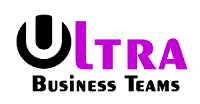HIPAA, the Health Insurance Portability and Accountability Act, is a vital regulation designed to ensure the privacy and security of patients’ protected health information. Compliance with these regulations is essential for healthcare organizations, but it can be challenging to achieve. But with the help of HIPAA compliance software, organizations can easily maintain compliance and avoid costly violations. In this post, we’ll discuss the five most common HIPAA violations and how to prevent them.
1. Unauthorized Access to Patient Information
One of the most common HIPAA violations occurs when employees access patient information without proper authorization. This can happen due to weak access controls or when curious employees decide to snoop on patient records.
Prevention Strategy: Implement strict access controls by enforcing the “least privilege” principle, meaning staff should only have access to the minimum amount of data necessary for their role. Conduct regular audits to monitor employee access and activity to identify and deal with unauthorized access early.
2. Failure to Perform Risk Analysis
Under HIPAA, organizations must perform regular risk assessments to identify vulnerabilities in their systems that could result in a data breach. By not conducting these assessments, healthcare providers leave themselves exposed to threats.
Prevention Strategy: Conduct HIPAA Audits at regular intervals using HIPAA compliance software. This will help identify any potential risks or vulnerabilities that need to be addressed.
3. Inadequate Security Measures
Healthcare providers must put in place proper security measures such as encryption, firewalls, and intrusion detection systems to protect patient data. Failing to do so constitutes a HIPAA violation.
Prevention Strategy: Work with IT professionals or external consultants to review current security protocols and identify potential gaps. Continuously update security measures to align with industry best practices and to combat evolving threats.
4. Breach of Unsecured PHI
A breach of unsecured protected health information (PHI) can lead to significant fines and damage to an organization’s reputation. To avoid such consequences, healthcare providers must implement appropriate safeguards for their electronic health records (EHR) systems and ensure data is encrypted in transit and at rest.
Prevention Strategy: Utilize HIPAA compliance software to automate processes and improve data security. Train staff regarding proper data handling procedures and best practices for securing PHI. Also, establish clear guidelines for reporting suspected breaches, as early detection is essential for mitigating damages.
5. Lack of Training and Awareness
Employee negligence and lack of awareness are significant contributors to HIPAA violations. Staff must understand the importance of compliance and the consequences of not adhering to regulations.
Prevention Strategy: Regularly conduct training sessions to educate employees on HIPAA requirements, including updates and changes to the regulations. Utilize various training methods such as workshops, seminars, and online programs to help ensure employees understand the importance of compliance.
To Sum Up
Maintaining HIPAA compliance can be challenging, but with the right tools and processes in place, organizations can avoid costly violations. Utilizing HIPAA compliance software is an effective way to ensure that all of your systems are secure and up-to-date. Additionally, implementing strong access controls, conducting regular audits and assessments, training staff, and staying up-to-date on the regulations is key to avoiding HIPAA violations. So, take the necessary steps to promote a culture of compliance within your organization and protect your patients’ sensitive information.



